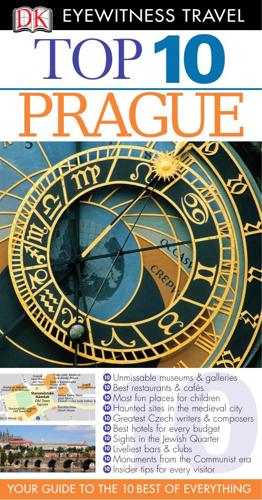
Top 10 Prague
by
Schwinke, Theodore.
Simple rooms and services. d Na Hřebenkách 60, Smíchov • Map A6 • 257 222971 • www.hotel vanicek.cz • No air conditioning • KK Note: Unless otherwise stated, all hotels accept credit cards, and have en-suite bathrooms and air conditioning 147 Index General Index 148 A absinth 53 Absinth Shop 87 accommodation 130, 138–47 Adalbert, St 120 AghaRTA Jazz Centrum 77 Agnes of Bohemia, St 28, 29 air travel 126 Alchemist Residence Nosticova 146 alchemists 53 Alcohol Bar 61 Alcron 62–3 Allegro 63 Alma (Mahlerová) Antique 102 Altars of SS Felicissimus and Marcia (The Loreto) 21 Altdorfer, Albrecht, Martyrdom of St Florian 29 Amadeus (film) 46 Ambiente – The Living Room 123 ambulances 137 American Heating 87 Anděl Metro 49 Angel Café 113 Anglo-American University 135 animals 130, 134 Anne (wife of Ferdinand I) 8 Annonce 130 Antique Cinolter 102 Antique Kaprova 102 antiques 132 Antonín 19 Apartment Lužická 146 apartments 130, 146 Apartments U Císaře 146 Apartments Úvoz 146 Apartments Vlašská 146 Archibald at the Charles Bridge 138 Aria 141 Art Coffee Gallery 96 Art Deco 56 Art Deco Hotel Imperial 142 Art Dekor 76 Artěl 56 Art Gallery (Old Town) 16 Arzenal 102 Astronomical Clock 16, 17 Atmoška 78 ATMs 136 Avril, Jane 27 B bags, in shops 132 Bakeshop Praha 101, 102 banks 136 Bar Bar 88 bargain food 132 Barock 103 Barrandov Studios 47, 120 Barrier-Free Prague 134 bars and kavárnas 60–1 non-stop and herna bars 129 Bashevi, Hendl 23 Bashevi, Jacob 23 baskets, in shops 132 The Beatles 50, 65 bed-and-breakfast 145 beer 53, 59, 133 Beethoven, Ludwig van 65, 68 Bellevue 79 Belltower (The Loreto) 20 Beneš, Edvard 11 Bernardt, Sarah 79 Bernini, Gian Lorenzo 38 Bertramka 120 Bethlehem Square 75 bicycles 127 Billiard centrum v Cípu 111 Binoche, Juliette 46 Biskupský dům 141 Black Light Theatre 55 Black Madonna, House of the 36 Blue 57, 76 boat trips 55 Boatel Albatros 143 Boathouse Hostel 144 boats 127 La Bodeguita del Medio 132 Bohemia Bagel 88 Bohemia International Folklore Dance Festival 68 Bohemian Chancellery (Royal Palace) 10 Bohemian Crown Jewels 13 Bohn 18 Boleslav II, Prince 9 books 132 bootleg goods 132 Bořivoj, Prince 8, 34, 90 Botel Admiral 143 Botel Racek 143 The Bourne Identity 47 Břevnov Monastery 120 Brahe, Tycho de 35, 92, 138 Braun, Matthias 18, 19 breakfast 131 Brod, Max 111 Brožík, Václav von, Prague’s Defenestration 11 brunch 131 Bruncvik, statue of 19 budget travel 133 Budweiser 53 Buffalo Bill’s 113 Bugsy’s 61 Buquoy Palace 86 buses 127 disabled visitors 134 C Čapek, Karel 44 R.U.R. 45 Čedok 128 Čelakovskeho sady 145 Černá Liška 140 Černý, David, St Wenceslas 31 Café 35 112 Café Bella Vida 88 Café Colonial 103 Café Faux Pas 122 Café Franz Kafka 103 Café Galerie 96 Café Gallery 96 Café Grand Praha 78 Café Imperial 79 Café Indigo 78 Café Louvre 111 Café Obecní dům 78 Café de Paris 75, 78 Café Poet 96 Café Savoy 96 Café Slavia 60 cafés Greater Prague 122 Josefov 103 Malá Strana 88 New Town 112 Old Town 78 Prague Castle and Hradčany 96 Choco-Story Museum 50–1 Chopin, Frédéric 105 Christmas 69 The Chronicles of Narnia: Prince Caspian 47 Church Pension 145 churches 38–9 Church of the Nativity 21 Church of Our Lady Before Týn 14, 38 Church of Our Lady of the Snows 31 Church of our Lady Victorious 38, 83 Church of Sts Cyril and Methodius 107 Church of St James 39, 65, 74, 75 Church of St Lawrence 33 Church of St Michael 33 Church of St Nicholas 15, 39, 65, 82, 83 Church of Sts Peter and Paul 121 Church of Sts Simon and Jude 65 music recitals 65 Chytilová, Věra 47 city gates 74 City of Prague, Museum of the 110 Clementinum 74, 75 Clinton, Bill 60 clubs 66–7 budget travel 133 coach travel 126 Colloredo-Mansfeld, Count 86 Communism 35 Communist Memorial 31 Communist monuments 48–9 Museum of Communism 49, 107, 110 composers 44–5 concerts, budget travel 133 Congress Centre 49, 121 Country Life 63 Cowboys 97 credit cards 136 in restaurants 131 in shops 132 La Creperie 122 crime 129, 130, 137 Cross Club 77 Cruise, Tom 46 Cubist houses 121 currency 136 currency exchange 136 customs limits 126 cycling 127 Cyril, St 19 Cyril and Methodius Day 69 Czech Ceramics 56–7 Czech Folk Crafts (Manufaktura) 76 Czech lessons 135 Czech Radio Building 49 Czech Statehood Day 69 Index Calvary 18 Cantina 89 Capuchin Cycle 29 Caratti, Francesco 86 Carlyle, Robert 47 cars 126, 127 driving lessons 135 parking 130 Casa Marcello 140 Casanova 82 Casements 121 Castle, Prague see Prague Castle The Castle Steps 146 Castle, Vyšehrad 53 Castle terraces 41 Cathedrals St Vitus’s 6, 12–13, 38, 65, 91, 93 Sts Cyril and Methodius 39 Cat’s Gallery 56 Celetná 74, 75 Celts 53 cemeteries New Jewish Cemetery 120 Old Jewish Cemetery 7, 22–3, 99, 101 Olšany Cemetery 120 Ceremonial Hall 100 Cézanne, Paul, House in Aix-en-Provence 26 Chapeau Rouge 61 Chapel of All Saints (Royal Palace) 11 Charles IV, Emperor 11, 13, 80 becomes Holy Roman Emperor 34 Church of Our Lady of the Snows 31 Hunger Wall 33 Karlovo náměstí 106 New Town 104 St Vitus’s Cathedral 12 Tábor Gate 121 tomb of 13 Charles VI, Emperor 25 Charles Bridge 6, 18–19, 53, 81, 83, 129 Charles University 135 Charles University Gift Shop 76 children 54–5 Chochol, Josef 121 D Da Nico 79 Dalibor 9 Day of the Fight for Freedom and Democracy 69 Day of Liberation 69 Day-Lewis, Daniel 46 Decastello 87 Decorative Arts, Museum of 37 Dee, John 35 Defenestration of Prague 11 La Degustation (Boheme Bourgeoise) 62 Deitch, Gene 47 Delacroix, Eugène, Rider Jaguar Attacking a Horseman 27 Delmedigo, Joseph Solomon 25 dentists 137 Depp, Johnny 47 The Devil 43 Devil’s Pillar 121 Diamond Monstrance (The Loreto) 21 Dientzenhofer, Christoph 82 Dientzenhofer, Kilian Ignaz 15, 82, 145 Diet (Royal Palace) 10 disabled visitors 134 discount travel 126 disabled visitors 134 Divadlo Alfred ve Dvoře 64 Divadlo Archa 64 Divadlo Na Zábradlí 64 149 Index Divinis 79 Dr Stuart’s Botanicus 56, 76 doctors 137 dog mess 129 dogs, helper 134 Domeček ve Střešovicích 143 Domus Henrici 141 Dorint Don Giovanni Prague 147 Dorotheum 57 Drahomíra 53 driving in Prague 127 driving lessons 135 The Drowned Man 52 drugs, illegal 53 Dubček, Alexander, Prague Spring 35, 49 Velvet Revolution 31 Dukla Memorial 16 Dům u Červeného Iva 141 Dům u Minuty 14 Dürer, Albrecht, Apocalypse Cycle 29 Dvořák, Antonín 44, 45 Dvořák Museum 110 New World Symphony 45 grave of 40 National Theatre 106 Dvořák, Karel 19 Dynamo 113 E Easter Monday 69 Ebel Coffeehouse 78 eccentric Prague 50–51 El Centro 89 Elevator (Old Town Hall) 16 Eliezer ben Elijah Ashkenazi 25 emergency numbers 137 Emmaus Devil 52 English-language grammar schools 135 Ephraim Solomon ben Aaron of Luntshits 25 Erpet Bohemia Crystal 57 Estates Theatre 65 Eufemia (wife of Wenceslas IV) 16 F false stories 53 Ferdinand I, Emperor Prague Castle 8, 41 150 Ferdinand I, Emperor (cont.)
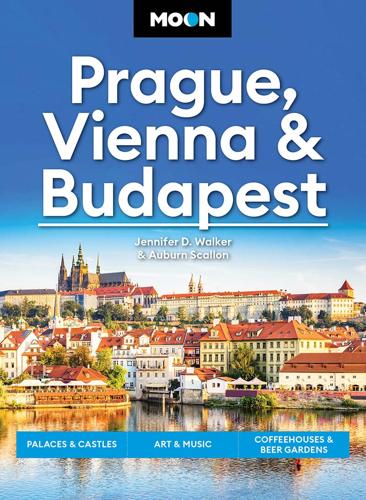
Moon Prague, Vienna & Budapest: Palaces & Castles, Art & Music, Coffeehouses & Beer Gardens
by
Jennifer D Walker
,
Auburn Scallon
and
Moon Travel Guides
Published 15 Oct 2024
The former royal residence and receiving area only retains a few small glimpses of its former glamour, but is best known as the site of war-causing conflict. The intricately webbed ceiling of Vradislav Hall covers a long central corridor that was historically used for jousting matches, and can be seen in the wide “Rider’s Staircase” used to exit the room. The palace tower also marks the site of the Second (more famous) Defenestration of Prague in 1618. Another religious rebellion, this time in response to the closure of Protestant chapels in Bohemia by Catholic Emperor Ferdinand II of the Habsburgs, saw two government officials and their secretary tossed out the window. The fall was not fatal—as legend has it, they landed in a pile of excrement before being taken in by Polyxena Lobkowicz at her nearby palace—but that doesn’t mean it didn’t have consequences.
…
This long strip of manicured lawns and rounded staircases provides an obstacle-free view (if you ignore the selfie-takers) over Malá Strana’s red-orange roofs, the Vltava River, Old Town, and the city beyond. Look along the castle walls outside the Old Royal Palace for the plaque at the base of the tower from which the officials were tossed during the Defenestration of Prague in 1618. Those on a free, self-guided castle grounds visit can access these gardens through the Bull Staircase from the third courtyard beside St. Vitus Cathedral, just opposite the Golden Gate and Great South Tower, or via Jiřská street after visiting the Lobkowicz Palace. Those on a Main Circuit tour can get here from the end of Golden Lane.
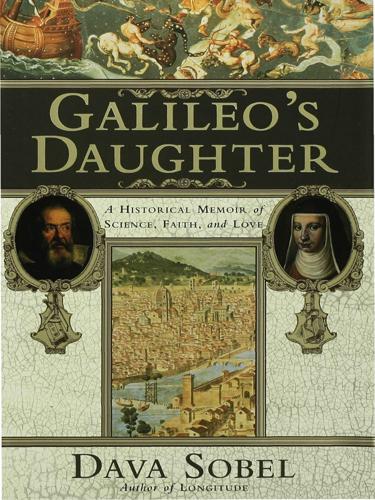
Galileo's Daughter: A Historical Memoir of Science, Faith and Love
by
Dava Sobel
Published 25 May 2009
Michelangelo proposed to send his wife, Anna Chiara, along with a few of their eight children, to stay with Galileo in Florence for an unspecified length of time, where the family would be safe from the German turmoil of what eventually came to be called the Thirty Years’ War. This conflict had begun in 1618, when enraged Protestant noblemen threw two Catholic governors out the windows of the royal castle in Prague. The “Defenestration of Prague” renewed long-dormant religious bloodshed between Protestant and Roman Catholic states in Germany. In no time the conflict drew in neighboring countries warring for the political prize at stake: control of the Holy Roman Empire of the German nation. By 1627, the fighting, almost entirely confined to German soil, embroiled Dutch, Spanish, English, Polish, and Danish armies.
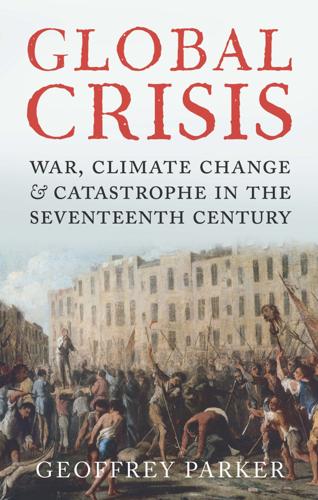
Global Crisis: War, Climate Change and Catastrophe in the Seventeenth Century
by
Geoffrey Parker
Published 29 Apr 2013
The tear stains and poor script suggest that Philip lost his self-control as he wrote his response and added his initial (the large ‘J’ at the end). 13 The British Civil Wars and the Revolt of Bohemia. (See page 324.) The Czech engraver Wenceslas Hollar, a fugitive in England, summarized in images the argument of John Rushworth’s Historical Collections concerning the origins of the Civil Wars. Like Rushworth, Hollar began with the ‘blazing comet’ and defenestration of Prague in 1618 (Q and W, upper right) , leading to the battle of White Mountain (the large right-hand image: X) ; while in Britain the Edinburgh riots (C, top centre) , the pacification of Berwick, the battle of Newburn, the Irish Rebellion (D, G and H, on the large left-hand image) , and Charles’s attempt to arrest the Five Members (I, bottom centre) , combined to produce war. 14 Rioting against the first use of ‘Laud’s Liturgy’ in Edinburgh, 1637.
…
Polyxena Lobković, the perceptive wife of the Chancellor of Bohemia (and a staunch Catholic), predicted that ‘Things were now swiftly coming to the pass where either the Papists would settle their score with the Protestants or the Protestants with the Papists.‘6 She was soon proved right. When the regency council declared the meeting of the Estates illegal, in May 1618 the Estates invaded the chamber where they met and threw two councillors, together with their secretary, out of a high window in an event that became known as the Defenestration of Prague. They then created a provisional government – not one member had held office under the crown – and began to raise an army in preparation for the inevitable Habsburg backlash. Religious tensions also ran high in Germany, fuelled by Protestant celebrations in 1617 of the first centenary of Martin Luther's successful defiance of the papacy.
…
In 1605 Johan Carolus of Strasbourg (in southwest Germany), who had previously made his living by compiling and circulating weekly handwritten newsletters, acquired a printing press and created the first printed newspaper in the world. Henceforth, instead of distributing 15–20 manuscript copies of his weekly bulletin for individual wealthy clients, he produced up to 500 copies for sale at a fraction of the cost. The Defenestration of Prague in 1618 – which almost everyone recognized as the harbinger of war (see chapter 8 above) – triggered a rapid expansion of the new medium: at least 15 cities published a German-language newspaper by 1620, rising to 30 by 1640. By then, Hamburg published two newspapers, each with a run of 2,500–3,000 copies; and in 1650 the first daily German newspaper began production.37 Other printed media also expanded rapidly.
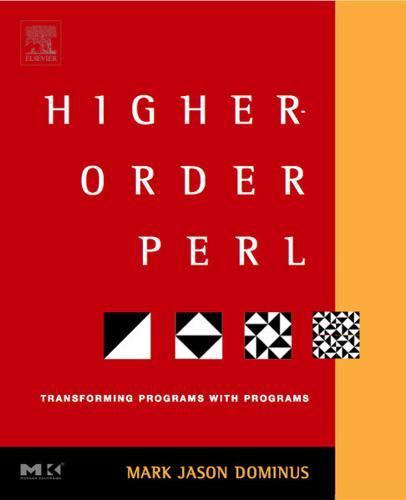
Higher-Order Perl: A Guide to Program Transformation
by
Mark Jason Dominus
Published 14 Mar 2005
For large font sizes, this was enough, because a single word such as “Hieroglyph” or “Cherrypickers” at 48-or 42-point size (respectively) would exactly fill the column; solving the problem for large sizes is a simple matter of scanning the table for the single word closest in size to 3.25 inches. But the same column must accommodate fonts of all sizes, from large to small, and there is no word that is 3.25 inches wide when set in 20-point type. Several words have to be put together to add up to the required length. For 20-point type, the example is “The Defenestration of Prague.”1 (See Figure 5.1.) Figure 5.1 A page from Hoefler’s type specimen catalog. In regular text, the typesetter will expand the spaces between words slightly to take up extra space when needed, or will press the words more closely together. In ordinary typesetting, this is acceptable. But in a font specimen catalog, the font designer wants everything to look perfect, and the spacing has to be just so.
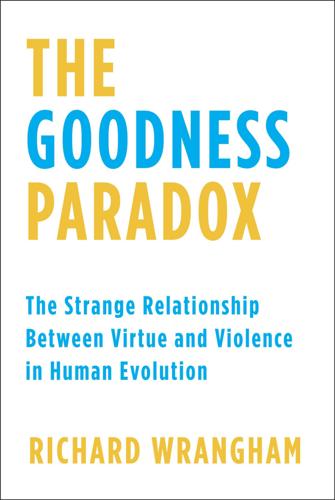
The Goodness Paradox: The Strange Relationship Between Virtue and Violence in Human Evolution
by
Richard Wrangham
Published 29 Jan 2019
I hoped that he would appreciate the value of a behavioral-ecology approach for understanding some problems of human violence. He never responded to me about it. A few months later, however, Gould published a critique of the approach taken in Demonic Males. His essay appeared first as “The Diet of Worms and the Defenestration of Prague” in Natural History magazine (September 1996). It was republished in Gould 1998. 20. Ferguson 1984, p. 12. 21. Lee 2014, p. 222, cf. Fry 2006, p. 5: “humans are capable of a great deal of violence.” Instead of disputing the potential for violence, the main complaint of Rousseauian scholars such as these is that Hobbesians bias their compilation of the rates of violent death among hunter-gatherers in favor of high rates (e.g.
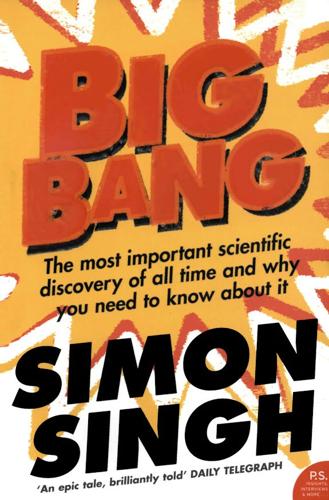
Big Bang
by
Simon Singh
Published 1 Jan 2004
That huge delay between inception and publication turned out to have severe consequences, because the ongoing Thirty Years’ War had changed the political and religious landscape, and Pope Urban VIII was now ready to quash Galileo and his argument. The Thirty Years’ War had begun in 1618, when a group of Protestants marched into the Royal Palace in Prague and threw two of the town’s officials out of an upper window, an event known as the Defenestration of Prague. The local people had been angered because of the continual persecution of Protestants, and by taking this action they sparked a violent uprising by Protestant communities in Hungary, Transylvania, Bohemia and other parts of Europe. By the time the Dialogue was published, the war had been raging for fourteen years, and the Catholic Church felt increasingly alarmed by the growing Protestant threat.
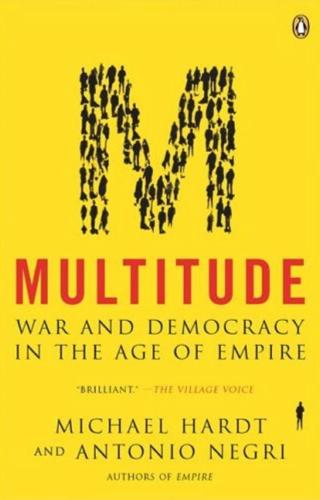
Multitude: War and Democracy in the Age of Empire
by
Michael Hardt
and
Antonio Negri
Published 1 Jan 2004
A new framework, beyond international law, would be necessary to confront this global civil war.2 The attacks on the Pentagon and the World Trade Center on September 11, 2001, did not create or fundamentally change this global situation, but perhaps they did force us to recognize its generality. There is no escaping the state of war within Empire, and there is no end to it in sight. The situation was obviously already mature. Just as the “defenestration of Prague” on May 23, 1618, when two regents of the Holy Roman Empire were thrown from a window of the Hradčany castle, ignited the Thirty Years’ War, the attacks on September 11 opened a new era of war. Back then Catholics and Protestants massacred each other (but soon the sides became confused), and today Christians seem to be pitted against Muslims (although the sides are already confused).
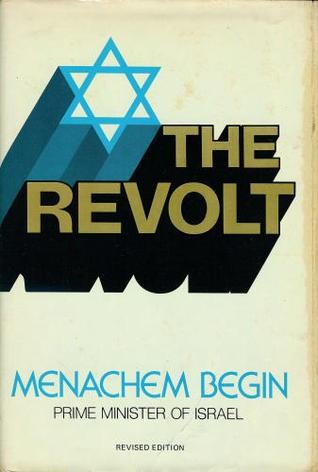
The Revolt
by
Menachem Begin
Published 14 Jul 2012
I stress the word "immediate," for in every war and in every revolution the fundamental causes which inevitably create wars or revolutions must be distinguished from those immediate causes which merely determine the time of their outbreak. The famine in France at the end of the eighteenth century and the Salt Tax did not cause the great Revolution: they only accelerated its onset, just as the Tea Tax served to light the ready fuse of the American War of Independence. Similarly it was the Defenestration of Prague which brought on the Thirty Years' War, the assassination at Sarajevo which brought on the First World War, the Danzig issue in 1939 which converted the inevitable struggle between Germany and the rest of the world into an accomplished fact. These historic laws operated, though on a far different scale, in the case of the Eretz Israel rising.
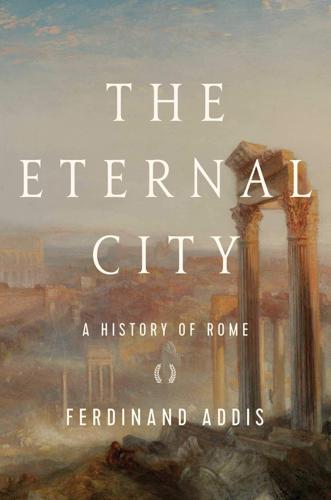
The Eternal City: A History of Rome
by
Ferdinand Addis
Published 6 Nov 2018
But by 1618 they were ready to have another try. A hundred years had passed since Luther had posted his ninety-five theses. Halley’s comet was burning balefully in the sky. Whipped up by fervid preachers and apocalyptic visions, the Protestant princes of Germany prepared themselves for war. The struggle was initiated by the Defenestration of Prague, when a crowd of Czech Hussites threw the regents of the Catholic Holy Roman Emperor from a window of Prague Castle. They survived, either because they were caught by the Virgin Mary or because they landed in a dung heap – but the emperor could hardly tolerate such rebellion from his heretical subjects.
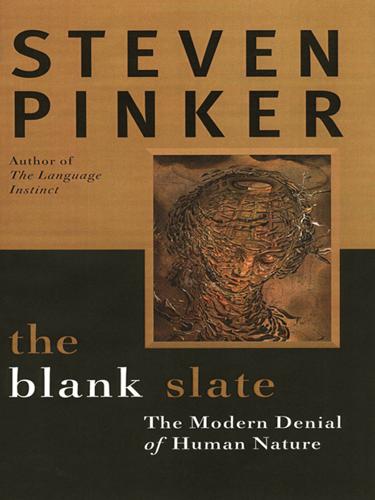
The Blank Slate: The Modern Denial of Human Nature
by
Steven Pinker
Published 1 Jan 2002
J. 1981. The mismeasure of man. New York: Norton. Gould, S. J. 1992. Life in a punctuation. Natural History, 101, 10–21. Gould, S. J. 1995. Ordering nature by budding and full-breasted exuality. In Dinosaur in a haystack. New York: Harmony Books. Gould, S. J. 1998a. The Diet of Worms and the defenestration of Prague. In Leonardo’s mountain of clams and the Diet of Worms: Essays in natural history. New York: Harmony Books. Gould, S. J. 1998b. The great asymmetry. Science, 279, 812–813. Grant, J. 1993. Fundamental feminism: Contesting the core concepts of feminist theory. New York: Routledge. Graves, D.
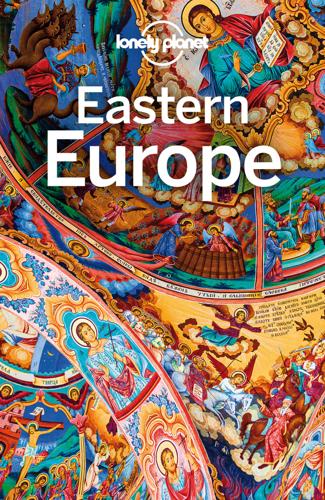
Lonely Planet Eastern Europe
by
Lonely Planet
,
Mark Baker
,
Tamara Sheward
,
Anita Isalska
,
Hugh McNaughtan
,
Lorna Parkes
,
Greg Bloom
,
Marc Di Duca
,
Peter Dragicevich
,
Tom Masters
,
Leonid Ragozin
,
Tim Richards
and
Simon Richmond
Published 30 Sep 2017
Old Royal PalacePALACE (Starý královský palác; MAP GOOGLE MAP ; admission with Prague Castle tour A & B tickets; h9am-5pm Apr-Oct, to 4pm Nov-Mar; j22) The Old Royal Palace is one of the oldest parts of Prague Castle, dating from 1135. It was originally used only by Czech princesses, but from the 13th to the 16th centuries it was the king’s own palace. At its heart is the grand Vladislav Hall and the Bohemian Chancellery, scene of the famous Defenestration of Prague in 1618. Lobkowicz PalaceMUSEUM (Lobkovický palác; MAP GOOGLE MAP ; %233 312 925; www.lobkowicz.com; Jiřská 3; adult/concession/family 275/200/690Kč; h10am-6pm; j22) This 16th-century palace houses a private museum known as the Princely Collections, which includes priceless paintings, furniture and musical memorabilia.

George Marshall: Defender of the Republic
by
David L. Roll
Published 8 Jul 2019
The initial investigation concluded that he committed suicide by leaping from his window. Some of his close associates, including his private secretary and his former wife, agreed. Many others were convinced that he was murdered—pushed or thrown out of the window to his death—calling it the Third Defenestration of Prague (the fourth and last investigation was completed in 2001). There was a sarcastic joke told by those who discounted the suicide story: “Jan Mastaryk was a very tidy man. He was such a tidy man that when he jumped he shut the window after himself.” * * * * * * * * On Monday, March 1, 1948, the Senate gallery was jammed to capacity with reporters and spectators.
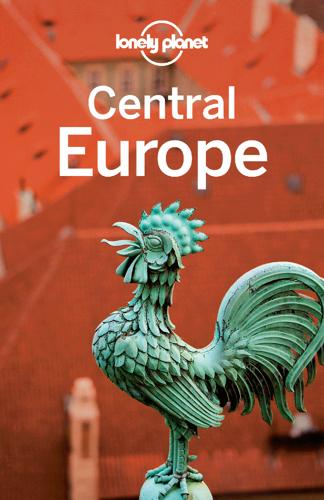
Central Europe Travel Guide
by
Lonely Planet
Opposite is the entrance to the Old Royal Palace (Starý Královský Palác) with its elegantly vaulted Vladislav Hall (1486–1502). Horsemen used to ride into the hall up the ramp at the far end for indoor jousts. Two Catholic councillors were thrown out the window of the adjacent Chancellery by irate Protestant nobles on 23 May 1618. This infamous Second Defenestration of Prague ignited the Thirty Years’ War. Leaving the palace, the Romanesque St George’s Basilica (Bazilika sv Jiří) dates from 1142, and the nearby St George’s Convent (Klášter sv Jiří; www.ngprague.cz; adult/child 150/80Kč, free with long tour; 10am-6pm Tue-Sun) was Bohemia’s first convent, established in 973 by Boleslav II.

Europe: A History
by
Norman Davies
Published 1 Jan 1996
They did not learn then, and have not learned since, that war only breeds war.’54 The Bohemian phase, 1618–23, began on 23 May 1618, when a delegation of Czech nobles entered the Hradčany Castle in Prague and threw the Habsburg governors, Jaroslav von Martinitz and Wilhelm von Salvata, out of a high window and into a dungheap (which broke their fall). They were protesting against recent attacks on Protestant churches, against Archduke Ferdinand’s contested assumption of the Bohemian throne, and against his alleged violations of the Royal Charter of Toleration, the Majestätsbrief of 1609. (This defenestration of Prague was a deliberate imitation of the incident that had sparked off the Hussite War 200 years earlier.) At the time, Ferdinand was campaigning for the imperial election, and the religious peace in Germany was wavering. The Lutheran princes were watching uneasily as the Evangelical Union led by Frederick, Elector Palatine, measured up to the Catholic League led by Maximilian, Elector of Bavaria.